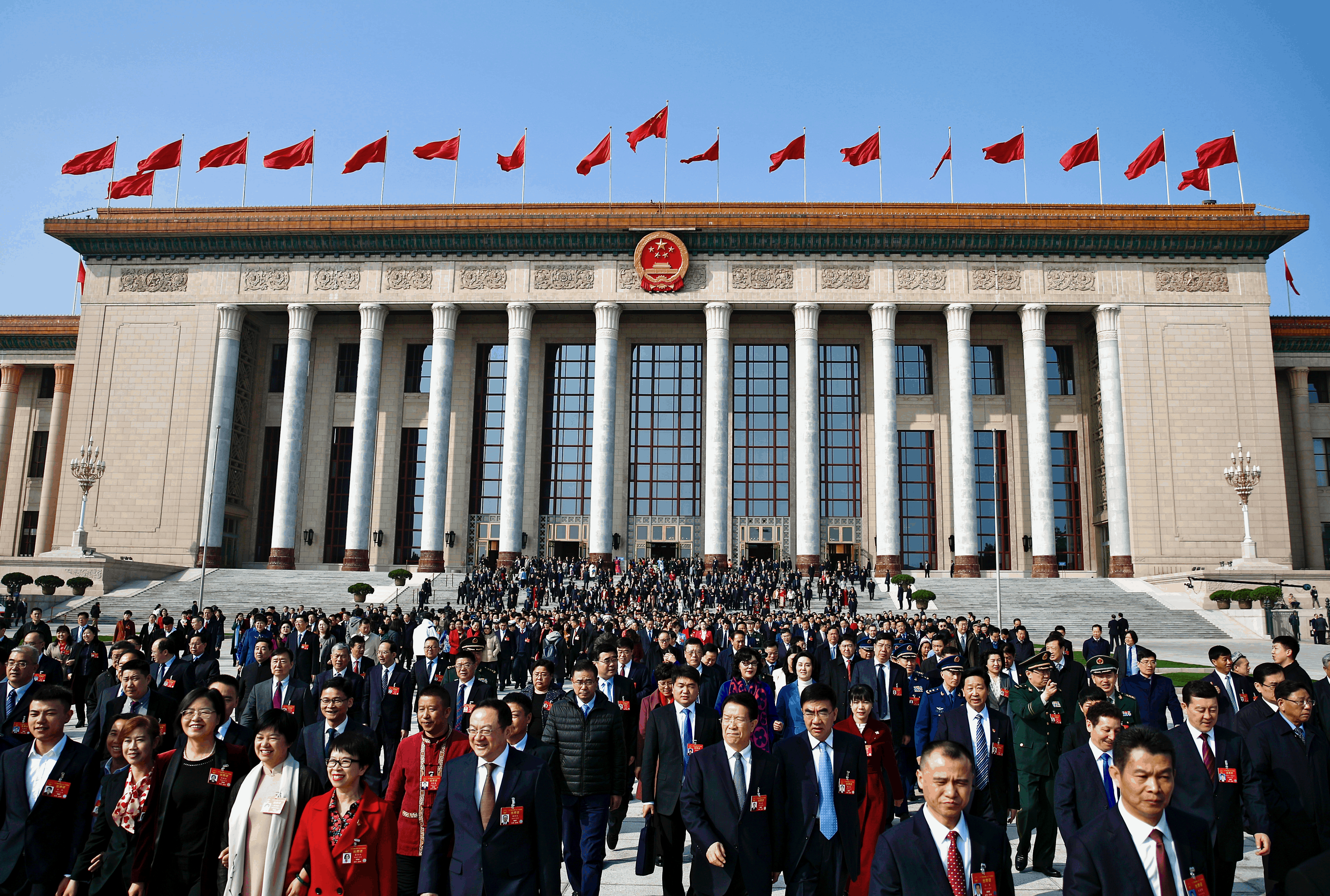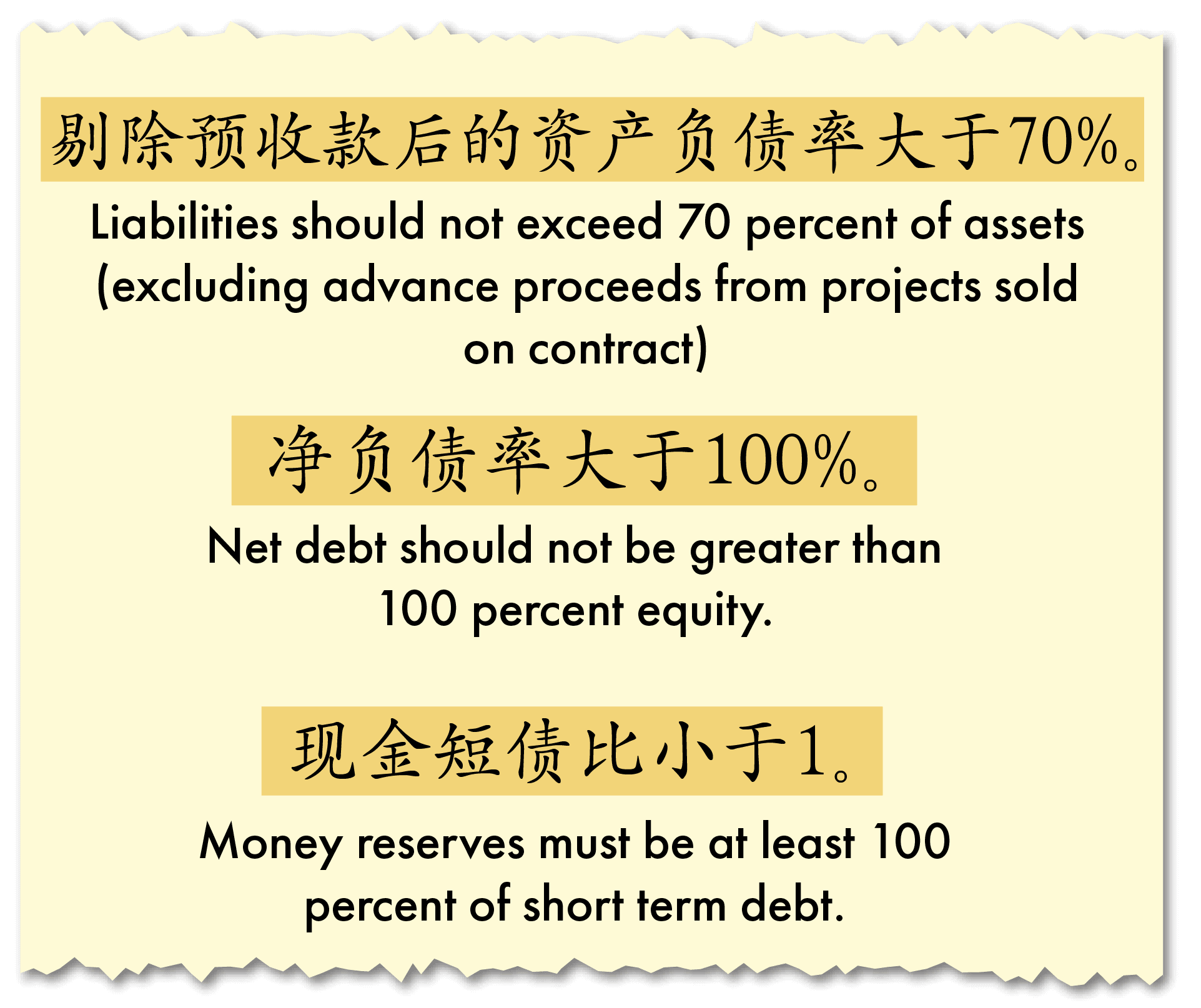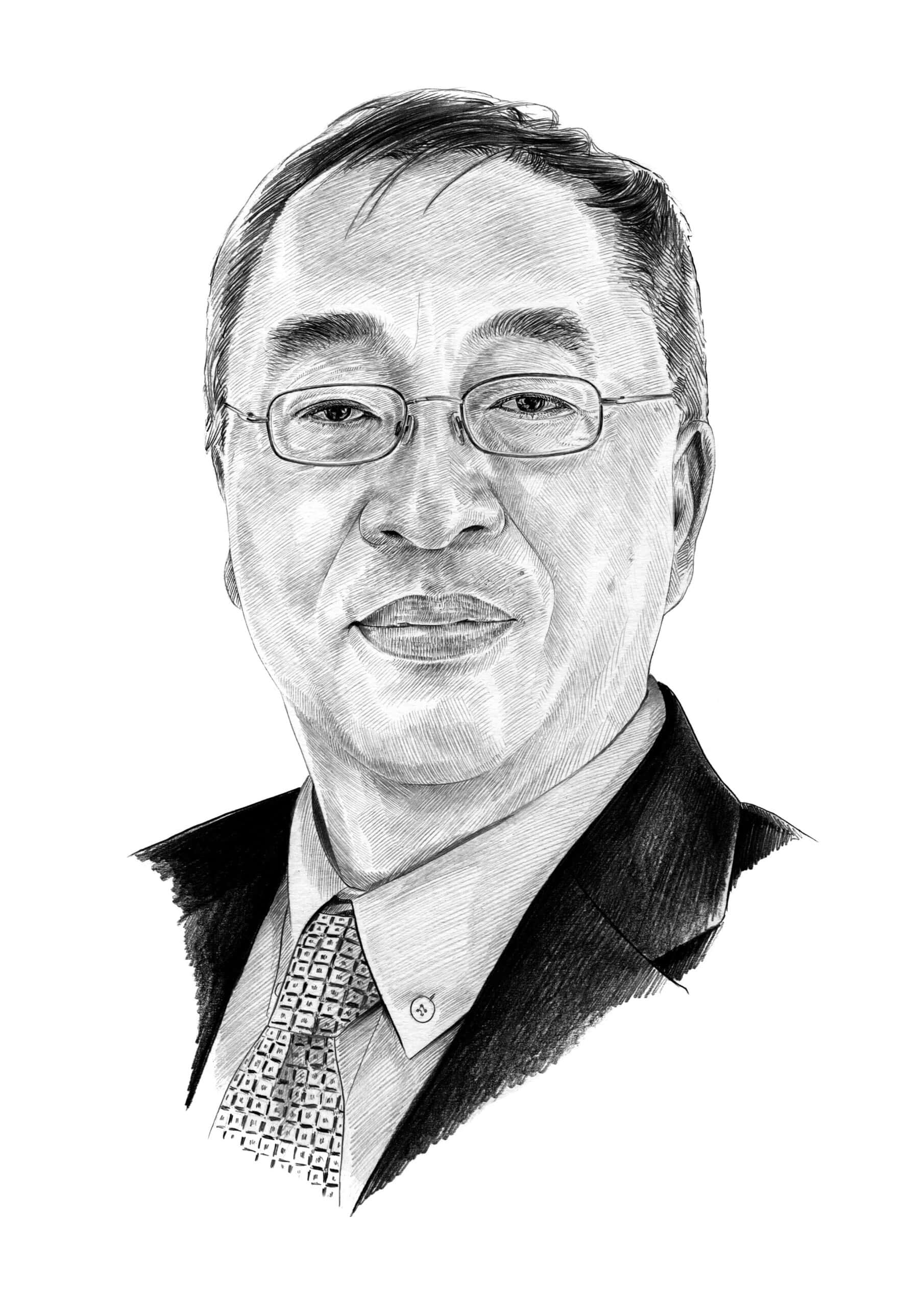
Even as it grapples with a slowdown, the Chinese economy has come a remarkably long way. Since embracing capitalism in the 1980s, China has leaped from being one of the world’s poorest countries to its second-largest economy. Even more remarkably, it has done so despite a relentless string of corruption scandals. Economist Paolo Mauro calls China a “gigantic outlier” for its combination of breakneck growth and widespread corruption.
The longstanding consensus is that Western industrialized economies achieved prosperity precisely by eliminating corruption and establishing good governance. This is supported by cross-country statistical studies which, using global corruption perception metrics, consistently find corruption detrimental to growth. Why, then, did the Chinese economy grow rapidly despite corruption? And why is it only now slowing down, after four decades of a sustained boom?
Answering these questions requires reframing the debate — in particular, reexamining popular narratives of Western history and the validity of global corruption indices.
In fact, looking a little further back in time reveals that China is not so unique. When the United States was an emerging economy during the late-nineteenth century, it, too, experienced rampant corruption. But many elements of America’s Gilded Age have long since been forgotten.
Global corruption metrics capture “corruption of the poor,” but not “corruption of the rich.” Relying on these partial indicators has obscured an important historical pattern: capitalist superpowers like the U.S. did not necessarily eliminate corruption; rather, their corruption evolved toward legalized elite exchanges that often precipitated financial bubbles.
Thus, China appears anomalous only if one takes the idealized West as the benchmark. But once the mythology has been stripped away, it becomes clear that China’s capitalist evolution is more like the Western experience than most people think.
AMERICA FIRST
There is a crucial distinction between notoriously predatory states, like Nigeria, and America and China during their respective Gilded Ages. What matters is the quality of corruption. In America and China, corruption evolved over time from thuggery and theft to more sophisticated exchanges of power and profit. Even as governments steadily curbed predatory forms of corruption, such as embezzlement and extortion, “access money” (elites trading favors) exploded, enriching politicians and politically connected capitalists, and thereby increasing inequality and fueling risky business deals.

In America, the problems stemming from such crony capitalism erupted several times over the nineteenth and twentieth centuries. The Panic of 1837, for example, was partly triggered by risky, non-transparent, corruption-laced forms of public infrastructure financing, making it an eerily similar precursor to China’s own predicament today.
Or, put another way, if China were an “outlier,” it is only as exceptional as the actual Western historical path, not the mythologized version that underpins conventional wisdom today.
During the U.S. Gilded Age, capitalists colluded with politicians to accumulate vast wealth as new industries were forged; indeed, some politicians were themselves capitalists, as in the case of the robber baron Leland Stanford (for whom Stanford University is named). Exploiting his prerogatives as governor of California, Stanford badgered the state legislature to subsidize his company’s railway projects, keeping the profits for himself while offloading the risks to the rest of society. His associates were known to carry company stocks in bulging suitcases as bribes for politicians; and to cut costs on railway construction, his company imported indentured workers from China and starved them into submission when they protested.
…the standard methods of assessing corruption make rich countries look clean, eliding all the sophisticated dark-money politics and financial chicanery that have come to light in recent years.
Much of this fraught history has been expunged from development economics. Standard accounts tend to cherry-pick slices of Western history, exaggerating the growth effects of a few celebrated episodes — most famously the 1688 Glorious Revolution in England — while omitting inconvenient realities of collusion and exploitation.

While the Glorious Revolution did strengthen parliament (a body then representing only the landowning elite) vis-à-vis the monarchy, the widely celebrated claim that it directly led to the Industrial Revolution is dubious. Historians have shown that the English government actually became more predatory after the revolution; but such findings have long been ignored, because they weren’t what the establishment wanted to hear.
This mythologized Western history has been further reinforced through global metrics that, as the late Sally Engle Merry put it, “convey an aura of objective truth … despite the extensive interpretive work that goes into their construction.” The World Bank’s Worldwide Governance Indicators and Transparency International’s Corruption Perceptions Index (CPI) both validate the impression that corruption is confined to poor, backward countries, whereas the Global North is mostly virtuous.

Political scientist Alina Mungiu-Pippidi even concludes that Britain, “the classical performer,” and “British empire splinters [with] populations of European descent” have reached an end state of “ethical universalism.” In these providential places, “equal treatment applies to everyone” (a claim that flies in the face of extreme inequality and the broader populist backlash across many advanced economies today).
As I noted in a recent commentary, global metrics “systematically under-measure what I call ‘corruption of the rich’ — which tends to be legalized, institutionalized, and ambiguously unethical — as opposed to ‘corruption of the poor.’” By design, the standard methods of assessing corruption make rich countries look clean, eliding all the sophisticated dark-money politics and financial chicanery that have come to light in recent years.
HOW CORRUPTION EVOLVES
Official metrics fail to capture the quality of corruption because they approach it as a one-dimensional problem that can be measured on a 0-100 scale. But corruption can take many varieties, with each variety posing different harms. That is why I distinguish four categories: petty theft (extortion by street-level officers), grand theft (embezzlement by politicians), speed money (small bribes to overcome bureaucratic hurdles or harassment), and access money (big payoffs in exchange for exclusive, lucrative privileges such as contracts and bailouts).

Petty and grand theft are like toxic drugs and will destroy any economy. Speed money is more like a painkiller: it can help small businesses overcome red tape, but it will not help them grow. Access money, on the other hand, functions like steroids: capitalists lavish politicians with big rewards not just to avoid hindrances, but to buy lucrative privileges and favors. The dealmakers get rich, but dangerous side effects will accumulate over time.
Over the course of two centuries, corruption in America has evolved from theft and petty bribery to legalized access money. Scandals during the Gilded Age prompted vigorous administrative reforms during the Progressive Era. Progressives dismantled the political spoils system and replaced it with a professional civil service that no longer needed to collect fees and solicit bribes for income. Transparency and accounting mandates curbed the misuse of public monies. Muckraking journalists exposed abuses of power. By the early twentieth century, historian Rebecca Menes writes, “the most striking aspect of embezzlement was how little it occurred.”

But capitalist influence over government continued. Railways, the most lucrative industry at the time, expanded and professionalized their lobbying activities. Instead of paying politicians bribes, companies hired groups with friends in Washington to secure subsidies, land grants, and other favors. This basic system still exists today. Between 2015-23, $46 billion was spent on lobbying at the state and federal levels. One study by a group of economists at the International Monetary Fund finds that U.S. banks that lobbied more took more risks and benefited more from bailouts after the 2008 financial crisis.
Since the 1980s, China has undergone a similar evolution, though it is a youngster compared to America. During its own early stages of development, theft, petty bribery, and extortion were common. But capacity-building reforms in the 1990s improved the government’s ability to control malfeasance.
As the chart below shows, China experienced a much higher incidence of theft (embezzlement and misuse of public funds) than exchange-based corruption (bribery) in the 1990s. But within a decade, the patterns had reversed: embezzlement fell while graft exploded, involving ever larger sums and more senior officials. Yet the institutionalized mode of access money in the U.S. remains illegal and embedded in personal relationships in China.

THE RISKS OF ECONOMIC STEROIDS
China’s old development model focused wholly on GDP, and thus paid scant regard to the quality of growth. In this context, the abundance of access money enriched a handful of capitalists who paid for privileges and rewarded the politicians who served their interests.
But, of course, this system also incentivized officials to pursue perverse, unsustainable modes of growth that maximized benefits for themselves and their cronies at the expense of social welfare. From the 2000s onward, local governments sold off land and over-invested in real estate, because that was the most expedient way to fill public coffers and line their own pockets.
While both the American and Chinese Gilded Ages did accomplish the great feat of raising material standards of living for hundreds of millions of people, their growth was unequal and unsustainable.
Meanwhile, the same officials had little incentives to provide low-cost housing for the massive rural migrant population toiling in factories and on construction sites. As a result, millions of working-class families who needed homes could not afford them, while the rich snapped up empty mansions.


In their heyday, China’s politically backed real-estate developers accumulated growing swaths of land and cheap loans, while regulators turned a blind eye to, or even enabled, risky business practices such as selling homes before building them. Scores of politicians were caught up in this 20-year dash for fast profits. For example, a former justice minister, Tang Yijun, is under investigation for his ties to Evergrande, the real-estate behemoth that filed for bankruptcy last year.

The developers’ exclusive access to easy credit was cut off in 2020, when the central government announced “three red lines” (restrictions on borrowing) to curb excessive debt in the real-estate sector. That is when the house of cards began to collapse. One of the first to fall was Evergrande, whose founder, Hui Ka Yan, was once the richest man in Asia. Many families who tapped all their savings to buy Evergrande-built apartments are now homeless, and suppliers are going unpaid, triggering a spiral of debt, job losses, and weak consumption.
President Xi Jinping inherited the country’s Gilded Age from his predecessors. While previous Chinese leaders’ defining challenge was to reduce poverty through growth, Xi has to deal with the backlash against crony capitalism and speculative bubbles. Using a command-and-control approach, he wants to end China’s capitalist excesses and turbocharge its transition to clean, high-quality development centered on technological innovation. Unlike U.S. progressive leaders a century ago, he rejects political activism as a solution to imbalanced growth.
It remains to be seen if he can pull off his brand of “Red Progressivism.” If U.S. history is any guide, it takes years of painful adjustments to get the economy back on its feet after a bubble bursts.
ZOOMING OUT
The conventional belief that corruption impedes economic growth, based on cross-national studies using global indicators, is an oversimplification. Global indicators like the CPI capture primarily, or only, “corruption of the poor,” whereas “corruption of the rich” is much harder to pin down and measure. But that is no excuse for pretending “corruption of the rich” doesn’t exist.
Unbundling corruption reveals that different types of corruption correlate differently with income. In my own prototype of the Unbundled Corruption Index, which captures each of the four varieties described above, speed money is predictably concentrated in poor countries, whereas access money is found in poor and rich countries alike. Similarly, in the Tax Justice Network’s Financial Secrecy Index, high-income countries rank at the top. These two snapshots stand in stark contrast to the one offered by the CPI, which consistently presents rich countries as the cleanest.

To be clear, the fact that access money can be found in high-income countries does not mean that it aids growth. Rather, access money should be seen as a core feature of crony capitalism, a recipe for excessive risks and distortions that eventually erupt into crises, as seen during the 1997 Asian financial crisis, the 2008 U.S. financial crisis, and China’s ongoing real-estate meltdown.
While both the American and Chinese Gilded Ages did accomplish the great feat of raising material standards of living for hundreds of millions of people, their growth was unequal and unsustainable. Ultimately, both periods offer cautionary tales about unbridled crony capitalism, not models for blind emulation.

Economists should also heed their colleague Ha-Joon Chang’s advice “to pay more attention to the real world, both of the present and historical — not the fairy-tale retelling of the history of the world that has come to characterize mainstream institutional economics.”
In the actual history of capitalism, Western societies did not establish ideal institutions and virtuous governance in one bold step and then prosper forever. The political and institutional reforms the West undertook during its early periods of development were only partial, just as we see in modern China. The Glorious Revolution tempered the monarchy with democratic representation by rich elites; similarly, Deng Xiaoping injected partial limits on power into China’s one-party system. In the U.S., corruption was initially rampant and only later evolved toward legalized access money; China already has partly replayed this development path.
As for policymakers elsewhere in the developing world, they must resist taking simplistic lessons from the histories of today’s rich countries. Fighting corruption is absolutely necessary, but by itself it is not sufficient to achieve sustained economic growth. As I explain in How China Escaped the Poverty Trap, other factors include friendly international relations, political stability, adaptive governance, and private entrepreneurship, among others. China’s own historic growth did not bring “happily ever after,” only a new, more vexing set of middle-income problems.
Copyright: Project Syndicate, 2024.

Yuen Yuen Ang, Professor of Political Economy at Johns Hopkins University, is the author of How China Escaped the Poverty Trap (Cornell University Press, 2016) and China’s Gilded Age (Cambridge University Press, 2020). Ang has been featured in The Diplomat, and written for Foreign Affairs, The Wall Street Journal and Project Syndicate.





